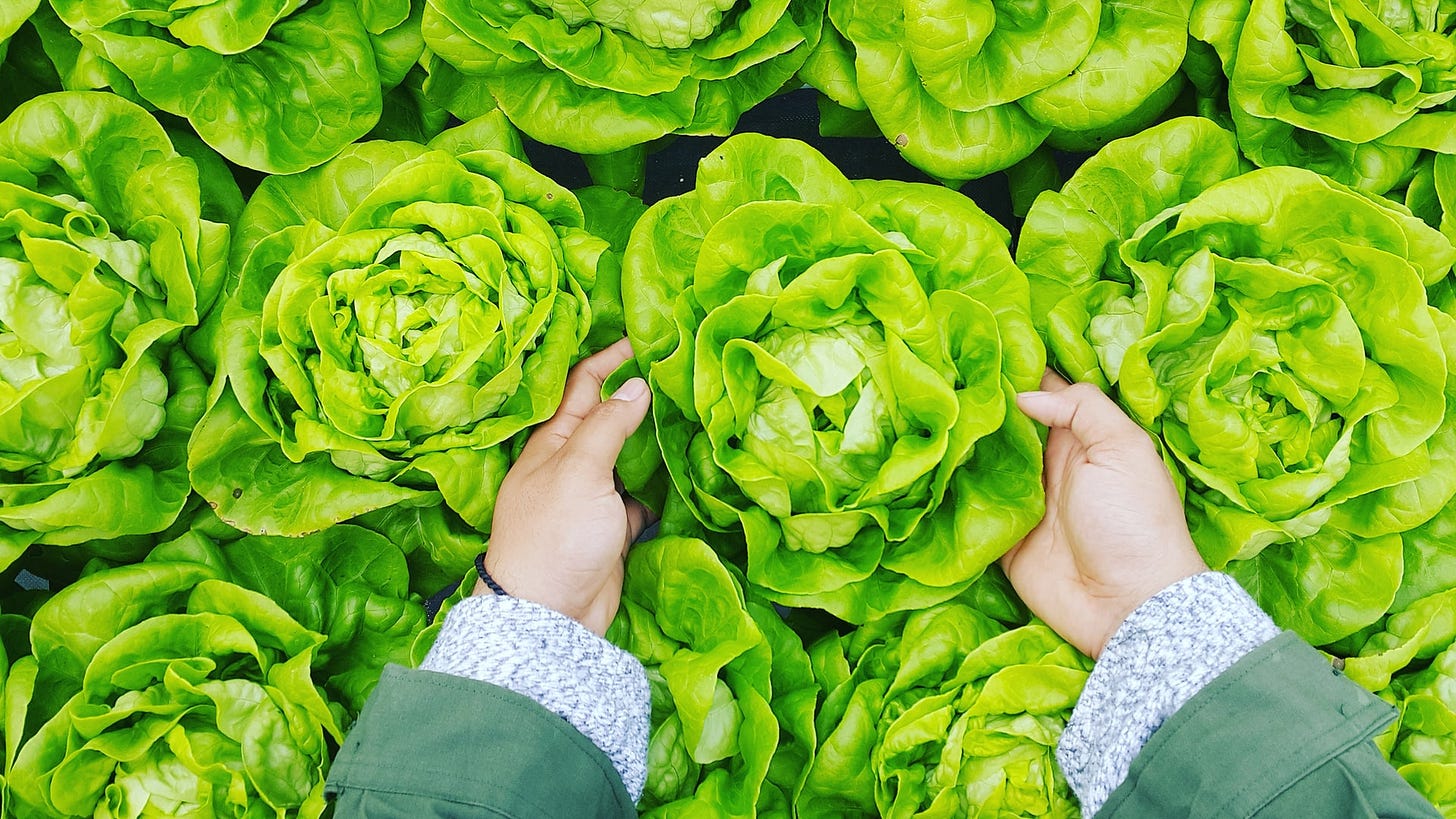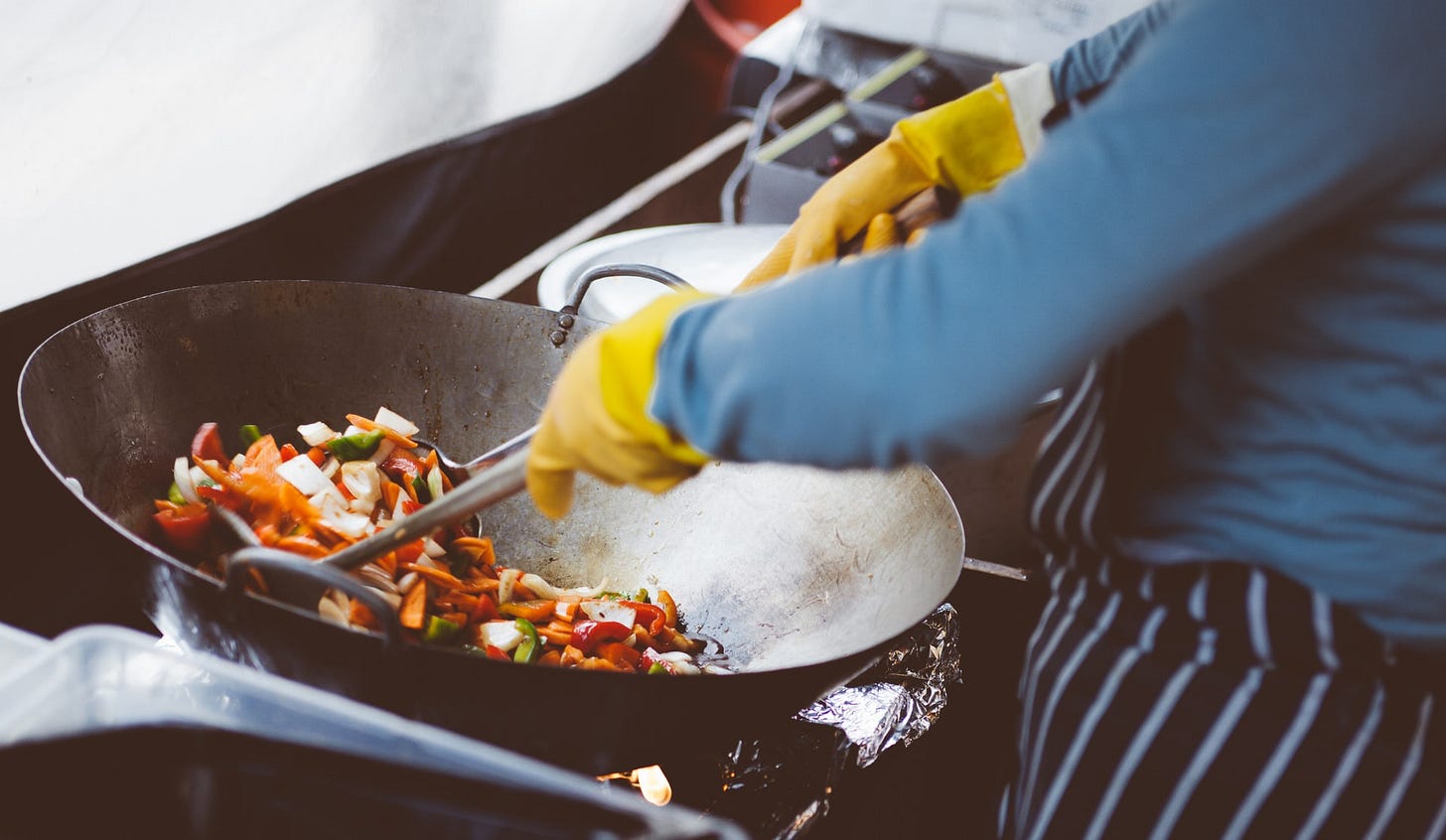Food as Service (Part 2)
Going beyond sharing food to share the true Bread of Life 🍞✝
This is part two of a two-part series on using food as a vehicle to serve others in our daily lives, churches and communities. If you missed part one, catch up here!
Taking a willing and open approach to using food as service opens our eyes to the true abundance we have to share with others.
In seeking opportunity to serve, particularly by sharing our bounty, we are seeking to serve God.
Providing for Others From Our Bounty
The book of Proverbs states that this type of service can be likened to deposits in a “heavenly bank account:“
“He that hath pity upon the poor lendeth unto the LORD; And that which he hath given will he pay him again.” (Proverbs 19:17 KJV)
This doesn’t contradict the Biblical principle of lending without expecting a reward; rather, it indicates that our actions toward the poor and needy here on earth please God in heaven—and don’t go unnoticed, even if we don’t receive recognition during our lifetimes.
It also affirms Paul’s statement to the Philippians that God will supply all we need when we are ready and willing to give sacrificially out of the blessings He has bestowed on us (Philippians 4:19).
These blessings come out of God’s own abundant riches, and the appropriate response is clear: Christians are to mirror God’s generosity (2 Corinthians 9:8).
The Principle of Gleaning
The Old Testament practice of gleaning vividly illustrates this principle. God included a provision in the Levitical law commanding people who had prosperous fields to leave a portion of their harvests for the needy (Leviticus 19:9). Workers in the field were not to pick up anything they dropped during the main harvest; after harvesting, they were instructed not to go back over the field to pick anything they may have missed.
Instead, they were to allow fellow Israelites who had no means of providing for themselves to gather what was left. In this way, everyone could be guaranteed access to nutritious food regardless of social standing.
The book of Ruth contains the clearest account of gleaning in action. Ruth, the widowed daughter-in-law of a widowed woman, is able to obtain staple grain during barley harvest thanks to the generosity of Boaz, a relative of the family. By allowing Ruth into his fields and instructing his workers to respect her, Boaz provided for Ruth and her mother-in-law out of his own bountiful harvest.
Modern-Day Gleaning
Today, gleaning groups and programs continue to practice this Biblical principle. Volunteers visit farms and pick as much of the food left in the fields after harvest as possible. They then donate what they glean to organizations that provide food to the needy.
It’s a much-needed service; farm waste accounts for 16% of all food wasted in the U.S. Given that our food system generates approximately 4000 calories per person per day but only provides around 2500 calories per day once waste is accounted for, that means about 240 calories per person per day sits unused and uneaten on farms.
That’s over 79 billion calories. Every single day.
Yearly, our average farm waste hovers somewhere around 19 billion pounds of food. Reclaiming even a small portion of this through gleaning could have a significant impact for those who frequently go without.
We can each practice this on a smaller scale within our own communities. When God blesses us with abundance—whether financially or with a literal harvest—we should take our cue from the Bible and delight in blessing others in turn.
On Donating Food
Expanding these blessings to reach more people is easier than many of us may imagine. We have numerous opportunities to reclaim and donate unused food, whether we volunteer as individuals or contribute as business owners.
Instead of throwing away 40% of the food from our restaurants, grocery stores and food service operations, we can partner with groups that collect and distribute food to food banks, city missions and homeless shelters. Thanks to the Good Samaritan Food Donation Act of 1996, we’re protected from liability when we donate food “in good faith.” (Gleaning groups that donate are covered, too.)
This opens doors for business owners and farmers to redistribute excess food they would otherwise throw away, compost or plow under. From “farm to food bank” movements to apps that connect donors with organizations that help the hungry, there are plenty of creative ways to get unused food to those in need.
Those of us who don’t have excess food to donate can contribute our time to local volunteer gleaning groups and food rescue operations. Both are impactful ways to participate in community outreach individually and together with brothers and sisters in Christ.
Food as Outreach
Having face-to-face interactions with the recipients of these generous donations can have even more impact—on them and on us.
Just like extending hospitality to strangers, volunteering our time to serve at a soup kitchen, city mission or homeless shelter can be uncomfortable. It opens our eyes to the real needs of others and challenges us to display patience, understanding and compassion in the face of situations we haven't personally experienced.
Photo by Clem Onojeghuo on Unsplash
It's a blessing I've witnessed in my own life when volunteering as a lunch server at the local city mission. I've gotten to know other volunteers and workers, many of whom have received help from the mission in the past and are eager to return and help others out of a sense of gratitude. I've handed plates of food to people from all walks of life who, for one reason or another, needed a place to get a hot meal and a comfortable bed.
Volunteering makes me keenly aware of my responsibility to share what God has given me—and the power we each have to make a difference through something as simple as food. Seeing that magnitude of need right on our doorsteps can transform our church outreach. Instead of being churches that exist within communities, we can use our churches to reach out and serve our communities.
We can open the doors of the potlucks and church dinners that are so often self-contained and turn them into safe places where people in the community can come, have a good meal and experience what Christian love and fellowship is all about.
We can consider the possibility of starting a food pantry within a church or establishing a hunger relief ministry. When hearts are willing and hands are able, these seemingly small actions can start a beautiful domino effect that prompts others in our cities and towns to join our efforts.
It comes back to the idea of hospitality: making people feel welcomed, loved and cared for. In opening our doors and making space at the table as a church, we communicate that we want to get to know the people around us, we want to understand their challenges and we're willing to help whenever needed.
Remembering the True Bread
In our practice of serving others with food, we point to the true Bread from Heaven—Jesus, Who provides the perfect model for service. His own "food" was to do God's will (John 4:34), and sacrificial service was His purpose.
Photo by Hamza Madrid on Unsplash
But Jesus didn't only show us how to serve each other; He demonstrated what it means to serve in love. He never begrudged His service or demanded something in return. He lived out the model of service that He taught, humbly submitting Himself to God's will and caring for the people around Him—even those He knew would later reject Him.
As Christians, we're to follow His example. We’re to pray for opportunities to reach out to those around us and provide for their needs even when it's not convenient or comfortable (1 Peter 4:9). We're to give of our blessings and enjoy the reciprocal blessing that comes from the act of hospitality itself (Acts 20:35).
In so doing, we become more like Christ and make lasting investments in eternity through the simple act of sharing food.
Thanks to Foster members Allie Crawford and Russel Smith for helping bring this piece to frutition!
Starting on October 21, Consuming Ourselves will switch to a weekly serial format — same focus, but with shorter posts that are easier to read in one sitting.
Will this help you get more out of the posts?
Please share your thoughts. Thanks for your continued support!




Love the posts! I really like the idea of switching to a weekly serial format. I think it will make the content more digestible (pun very much intended).